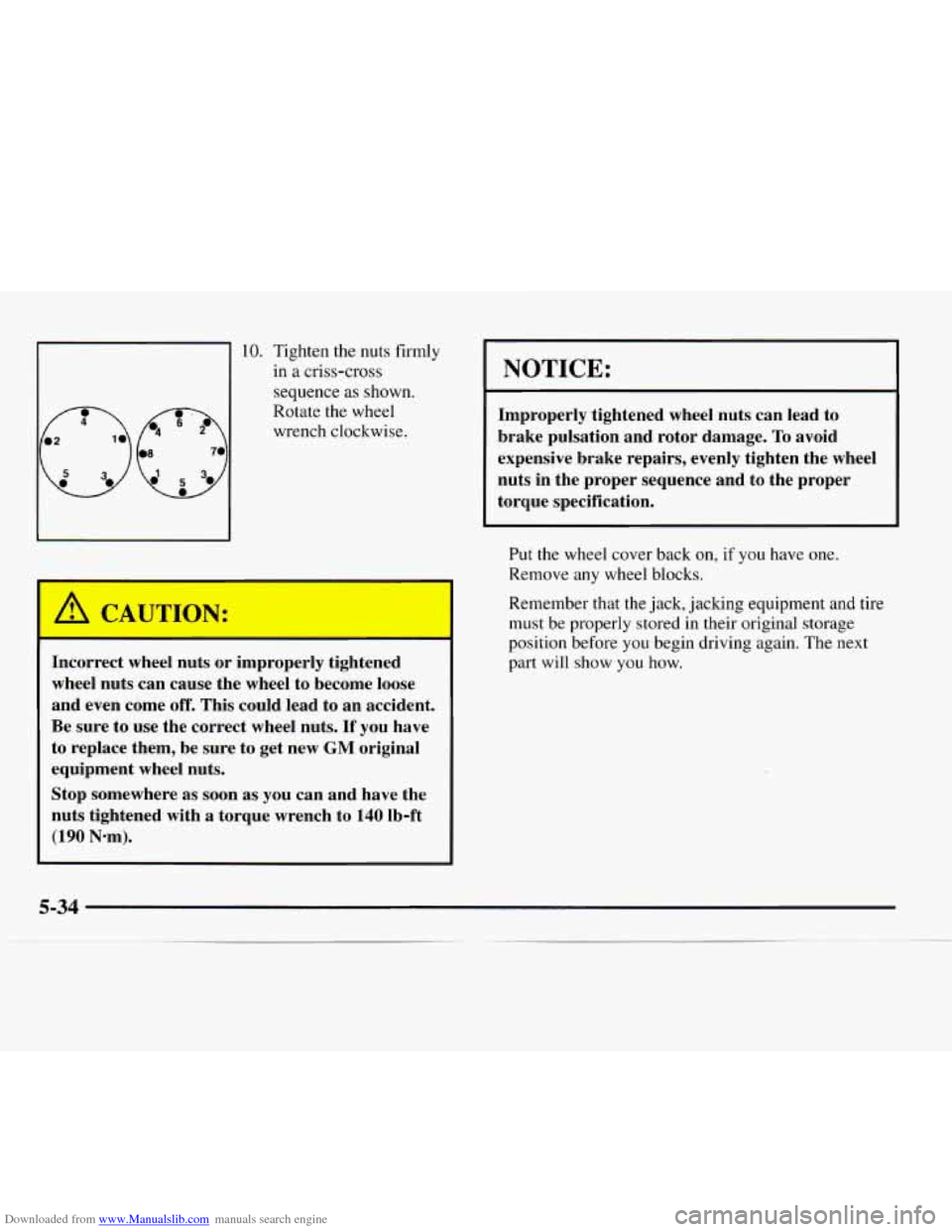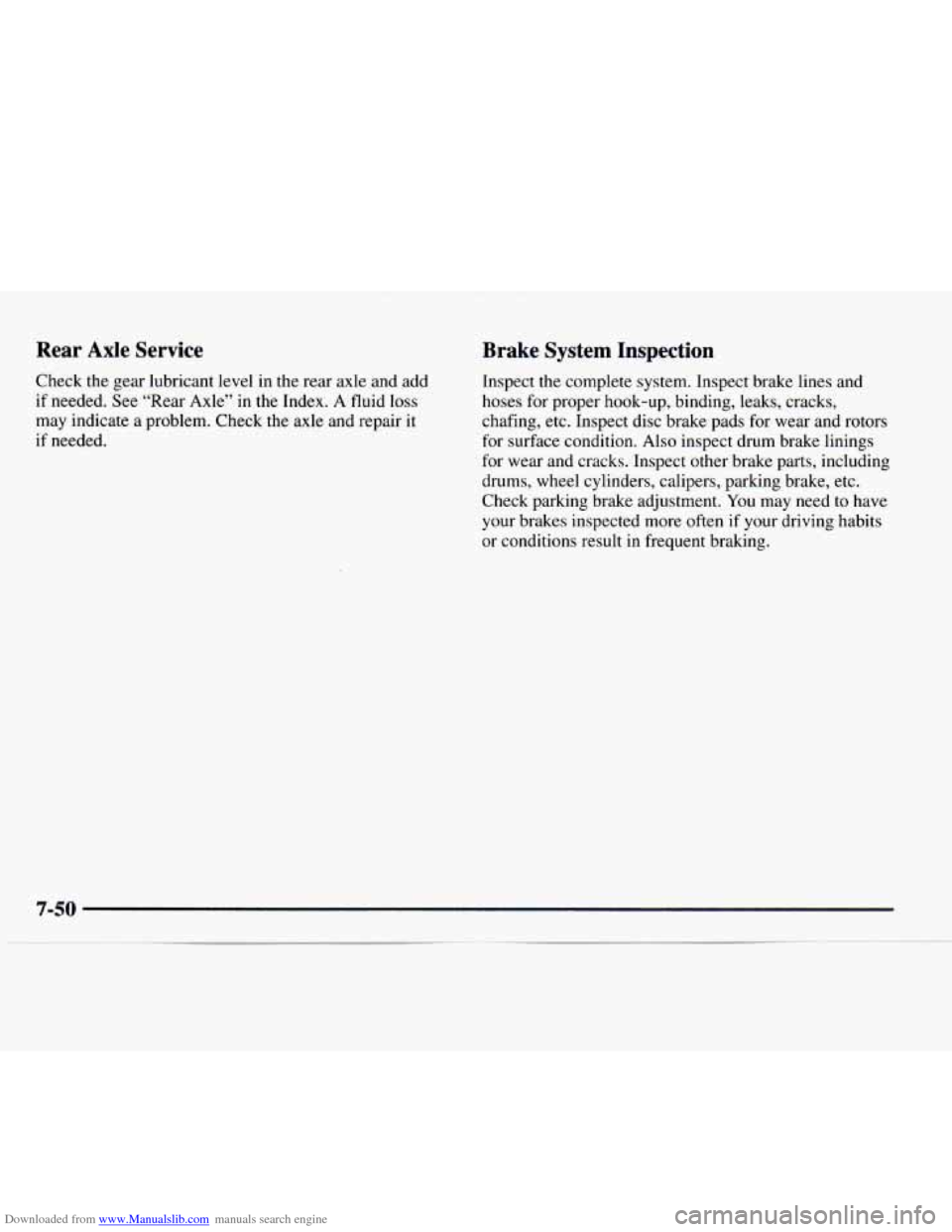Downloaded from www.Manualslib.com manuals search engine I
10. Tighten the nuts firmly in
a criss-cross
sequence
as shown.
(f3, e
Rotate the wheel
wrench clockwise.
A CA "TION:
I
Incorrect wheel nuts or improperly tightened
wheel nuts can cause the wheel to become loose
and even come
off. This could lead to an accident.
Be sure to use the correct wheel nuts.
If you have
to replace them, be sure to get new
GM original
equipment wheel nuts.
Stop somewhere as soon as you can and have the
nuts tightened with
a torque wrench to 140 Ib-ft
(190 N*m).
NOTICE:
Improperly tightened wheel nuts can lead to
brake pulsation and rotor damage.
To avoid
expensive brake repairs, evenly tighten the wheel
nuts in the proper sequence and to the proper
torque specification.
Put the wheel cover back on, if you have one.
Remove
any wheel blocks.
Remember that the jack, jacking equipment and tire
must be properly stored in their original storage
position before you begin driving again. The next
part will show you how.
5-34
Downloaded from www.Manualslib.com manuals search engine Rear Axle Service
Check the gear lubricant level in the rear axle and add
if needed. See “Rear Axle”
in the Index. A fluid loss
may indicate a problem. Check the axle and repair it
if needed.
Brake System Inspection
Inspect the complete system. Inspect brake lines and
hoses for proper hook-up, binding, leaks, cracks,
chafing, etc. Inspect disc brake pads for wear and rotors
for surface condition. Also inspect drum brake linings
for wear and cracks. Inspect other brake parts, including
drums, wheel cylinders, calipers, parking brake, etc.
Check parking brake adjustment.
You may need to have
your brakes inspected more often if your driving habits
or conditions result in frequent braking.

